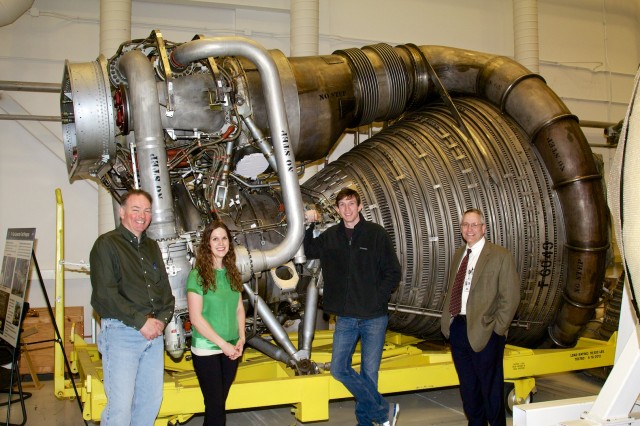At least they were when compared to the computing power and knowledge base we have today. Manufacturing techniques, such as 3D printing, weren't even really thought of except by people like Heinlein and Asimov and a few more.
You'd that thought that if we had flown people to the moon that we knew what we were doing when it came to rockets, but come to find out we didn't.
This is the story of some kids decided to get their hands dirty on an old F1 rocket engine and what they learned.
http://arstechnica.com/science/2013/04/how-nasa-brought-the-monstrous-f-1-moon-rocket-back-to-life/

I would love to see (feel) one of those babies light off. Seeing 5 of them must have been intense.
Cool to see the old craftsmanship.

This is why the quiz about science in the other thread is important. If people are interested, educated and excited about science the future will be a much more interesting place. I hear (probably mentioned in that article) that the next generation of manned spacecraft is going to be an evolution of that engine. I'm not sure if that's sad or just a testament to the F-1 being the pinnacle of gas-generator engines.
It sort of sucks that the design process wasn't very well documented compared to todays standards. That's really why these engines need to be studied more and actually run to get an idea of how they worked and why it worked so well.
Also in my ramblings I need to insert something about how the shuttle project was a bastardized half way point in space craft design by a committee of people that didn't really understand what they were legislating for or against, that set the space program back by 30 years. Lay down some constraints and let a competent project manager herd the engineers. It works better that way, please see anything related to Kelly Johnson if you disagree.
the shuttle was a good program for what it was originally intended for- taking large cargoes and people to space and bringing them back.. hence, the name "shuttle".. but then they decided to try to make it do everything and watered down it's capabilities in the process.
now if only the USA had the political will power to keep refining and improving the Saturn V while also flying the shuttle and keeping each doing what they were good at...
back on topic: they are also starting to find and bring up the F1 engines from the Apollo days off the ocean floor..
We might have the computing power now, but we sure dont have the attitude. IIRC, the backup computer for calculating reentry angles on Apollo flights was a Picket 6" aluminum slide rule, good for 2, maybe 3 sig figs. Pi was 3.14159 and that was accurate enough.
Now a 4 core 45 nm microprocessor screams along at 2-2.6 gigahertz a few inches from my balls so I can complain about things on an international high speed computer network(which I'm connected to without wires) holding all the worlds knowledge. But will I get off my dead ass and use it all for anything world changing? Probably not.
Kenny_McCormic wrote:
We might have the computing power now, but we sure dont have the attitude. IIRC, the backup computer for calculating reentry angles on Apollo flights was a Picket 6" aluminum slide rule, good for 2, maybe 3 sig figs. Pi was 3.14159 and that was accurate enough.
Now a 4 core 45 nm microprocessor screams along at 2-2.6 gigahertz a few inches from my balls so I can complain about things on an international high speed computer network(which I'm connected to without wires) holding all the worlds knowledge. But will I get off my dead ass and use it all for anything world changing? Probably not.
if you want to feel like you are doing something good with that super computer in your pocket, you can always go on facebook and do your part to help some kid get a kidney by sharing the pic that says that some kid gets a kidney if the pic gets 10,000 shares...

































